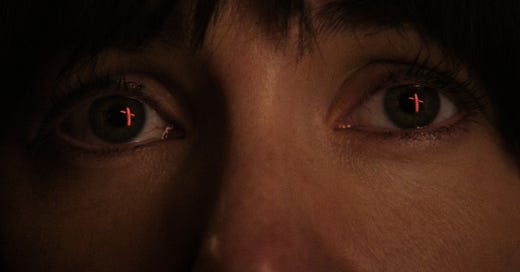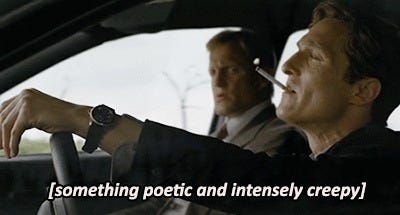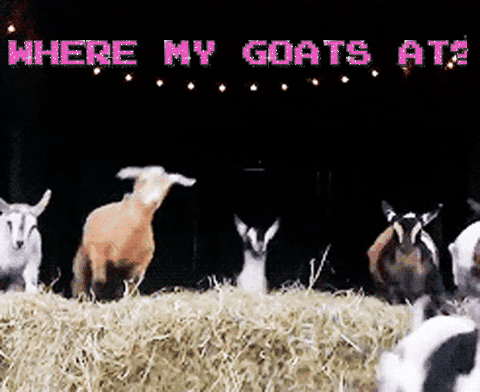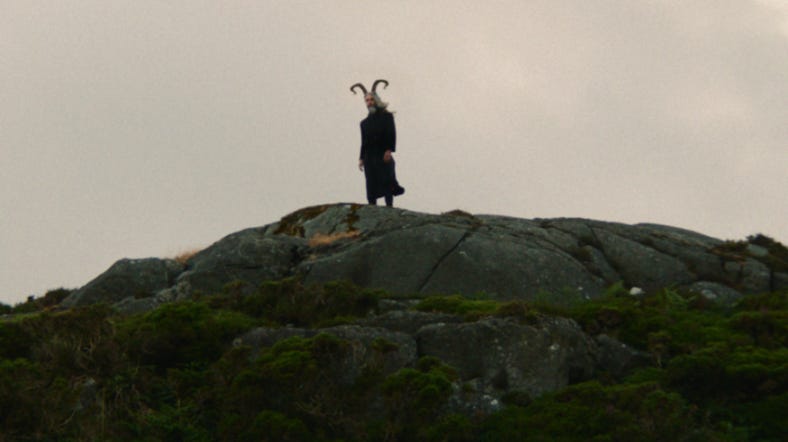I recently read a comment on a horror subreddit along the lines of "is this just another horror film where the horror is a metaphor for trauma?" and I can't remember whether the thread was about Fréwaka or another film, but it annoyed me regardless. Everything is metaphor. Horror has always included themes of trauma, just as sci-fi has always reflected the political worlds in which we live, the ones that haunt our futures, or those that can only be dreamt of. Complaining about horror-as-trauma is like stating you're bored of human consciousness and wish to reincarnate as a rock (same tbh). To be human is to be aware of our own futility, and we pass the hours by creating art that speaks to the particular nihilism of our predicament.
In the immortal words of Rustin Cohle from True Detective: "To realize that all your life, all your love, all your hate, all your memory, all your pain, it was all the same thing. It was all the same dream. A dream that you had inside a locked room. A dream about being a person. And like a lot of dreams, there’s a monster at the end of it."
Anyway, I digress (sort of). My point is that horror and trauma go hand in hand. The horror is there because we are traumatized; otherwise, what would be horrifying about any character's circumstances? Without trauma, there is no horror.
Anyone who knows me well is aware that my favorite horror subgenre is folk horror, so I'm glad to start this newsletter with an issue dedicated to Aislinn Clarke’s Fréwaka, an Irish film with shades of Carrie, Rosemary's Baby, and The Wicker Man. The protagonist is Shoo (Siubhán), a nursing student who takes a home-health assignment in the countryside as a live-in caregiver for an elderly woman who just had a stroke, Peig, who, we presume, also has dementia. She is described in her medical chart as paranoid and pisses at the threshold of her home to scare Shoo off, whom she suspects might be a fairy.
Before we even meet Peig, however, the first images of the film feature a young girl who disappears after seeing a goat on her wedding night and another woman hanging herself in her apartment.
Peig lives in a remote village and Shoo's journey is dotted with people who warn her about the house but remain helpful to her, at first. Before Shoo can access Peig's house, she has to pass a young boy and his goat, at which point I remarked to the friend with whom I watched the movie, "You know it's folk horror when there are goats."
Much like in Rosemary's Baby, our protagonist has a series of strange encounters and sensory experiences that could be the result of skewed perception or missed medication leading to paranoia, or perhaps due to nefarious activities on the part of the increasingly unfriendly townspeople, the cold and pushy staff of the care agency for which Shoo works, or the mysterious beings Peig alleges live in a house beneath her house and who are prevented from ascending the basement stairs by a collection of solid metal wards.
We eventually discover that the girl who disappeared on her wedding night at the beginning of the film was a young Peig, spirited away by “them” and tortured cruelly until her husband made a deal to give “them” their newborn daughter (conceived out of wedlock as the film’s opening would suggest).
Shoo has a pregnant fiancée at home, a Ukrainian woman named Mila who spends the film sorting through the belongings of Shoo's estranged mother who recently died by suicide (the hanged woman we also saw at the beginning of the film). Shoo and Mila bicker increasingly over the phone as Shoo descends into a shared madness (or is it?) with Peig and avoids dealing with her grief until Shoo sends her a box of her mother's items in the mail, an act that enrages an increasingly fragile Shoo. It is this box that leads to a crucial moment in the storyline, though, as her mother’s birth certificate reveals that Peig is her grandmother (Shoo’s mother was adopted) and that “they” are after the descendant they could never claim.
Fréwaka is the perfect vehicle to delve into the cross-section of Catholicism and pagan folklore unique to Ireland, and it's fitting that much of the film is as Gaeilge as Peig's character is a fluent speaker and she and Shoo speak almost entirely in Irish to one another. (As an aside, I took a six-month immersive Irish-language course in Dublin over 20 years ago, and it was fun to listen and realize how much I understood without the aid of subtitles.)
I think one of the reasons this film unsettled me is that it brought me back to a particular time in my life, between the ages of 18 and 24, when I lived in Ireland, married an Irish man, became an Irish citizen, and was forced to confront certain elements of my secular American upbringing that clashed with the Irish Catholic culture I married into. When I was 18 and my ex-husband and I announced to his family that we were marrying, I was encouraged to inform his devout great aunt that we would not be officiating the ceremony in a church because I was a Buddhist (not entirely untrue, but not really true either). The rationale was that, as a religious woman, the great aunt would understand someone who practiced a different faith more than someone who did not have one at all. She accepted it, but from the wedding onward we periodically received cards in the mail from some monastery or other informing us that she had submitted our names for prayer requests and would continue to hope that our marriage would be sanctified by the Church. Specifically, she was concerned about the fate of our souls.
Meanwhile, me:
A few years later when this same great aunt developed dementia and we moved into her home to care for her, I found myself surrounded by relics of her lifelong faith. Pope Benedict XVI (AKA Joseph Ratzinger, AKA Papa Ratzi as I remember referring to him back then) had just ascended to the papacy and the great aunt had already hung an elaborate portrait of him in her living room. Every room in the house featured a wall-mounted font to use upon entry, and the bedroom I would share with my husband possessed a large painting of the Sacred Heart of Jesus that hung directly above our bed. "We are taking that down immediately," I announced upon flipping the light switch.
There were gallon jugs of holy water blessed at the Knock Shrine, dozens upon dozens of figurines of the Virgin and various saints, and in other ways unrelated to Catholicism the home was definitely that of someone who developed a hoarding habit after living through the deprivations of war (in other words, trauma). This aunt also spoke fluent Irish and we would have regular conversations as Gaeilge so that I could practice, which delighted her as she didn’t often get the chance to speak her preferred language.
I share all of this because I was reminded of this strange year in my life as I watched Shoo walk through Peig's home, enduring flashbacks of the religious abuse she suffered at the hands of her now-deceased mother and hearing her mother scold her younger self and force repentance.
When Shoo finally descends to the underworld beyond Peig’s basement, she is faced with the spirits of the land (always the true main character in a folk-horror film and a reminder that the land itself is alive, watching us, and craving our blood) and her eyes bleed like those of a haunted holy statue.
There is so much to unpack here from familial to religious to cultural trauma, and I think the heart of the story resides in Peig’s response when Shoo asks her to describe the land she was stolen away to as a young girl: “a madhouse, a famine village, a laundry house, a coffin ship, a field poisoned with blight, and a street full of blood and bullets.” She has summed up a history of colonialism in Ireland (in her own native language, no less), from forced famine to diaspora, as well as a history of rebellion and of subjugation of women (see: Magdalene laundries). Was Peig’s child really stolen by otherworldly creatures, or was she sent away to give birth and hand over her baby? Is she haunted by actual beings at the bottom of the basement steps or merely her own memories? Do the townspeople disparage and revile her because she is “crazy” or because she dares speak of things others would rather bury?
Fréwaka is a visually stunning, moving portrayal of women and mothers grappling with generational trauma and trying desperately to protect one another from relentless threats by a deceptive, all-powerful, and mysterious enemy. In the end, all they can do is make the same bargain over and over, helpless to prevent the cycle from repeating with their own daughters.
Happy Mother’s Day?
🖤 Isobel
Coming Up
Mid-week I’ll send a paid-only newsletter with my thoughts on 2005 film The Ballad of Jack and Rose starring Daniel Day Lewis and Catherine Keener (spoiler alert: I hate it!), and next weekend will be all about Aislinn Clarke’s debut film The Devil’s Doorway (I’ll probably regret watching her two films out of order and want to revise today’s newsletter, but I’ve lived my entire life out of order so why should Substack be any different?)
If you have any thoughts on Fréwaka, or have movie recommendations or requests for the newsletter, leave a comment!
Sources for this newsletter:
‘Frewaka’ review: Irish language folk horror will leave you shook








